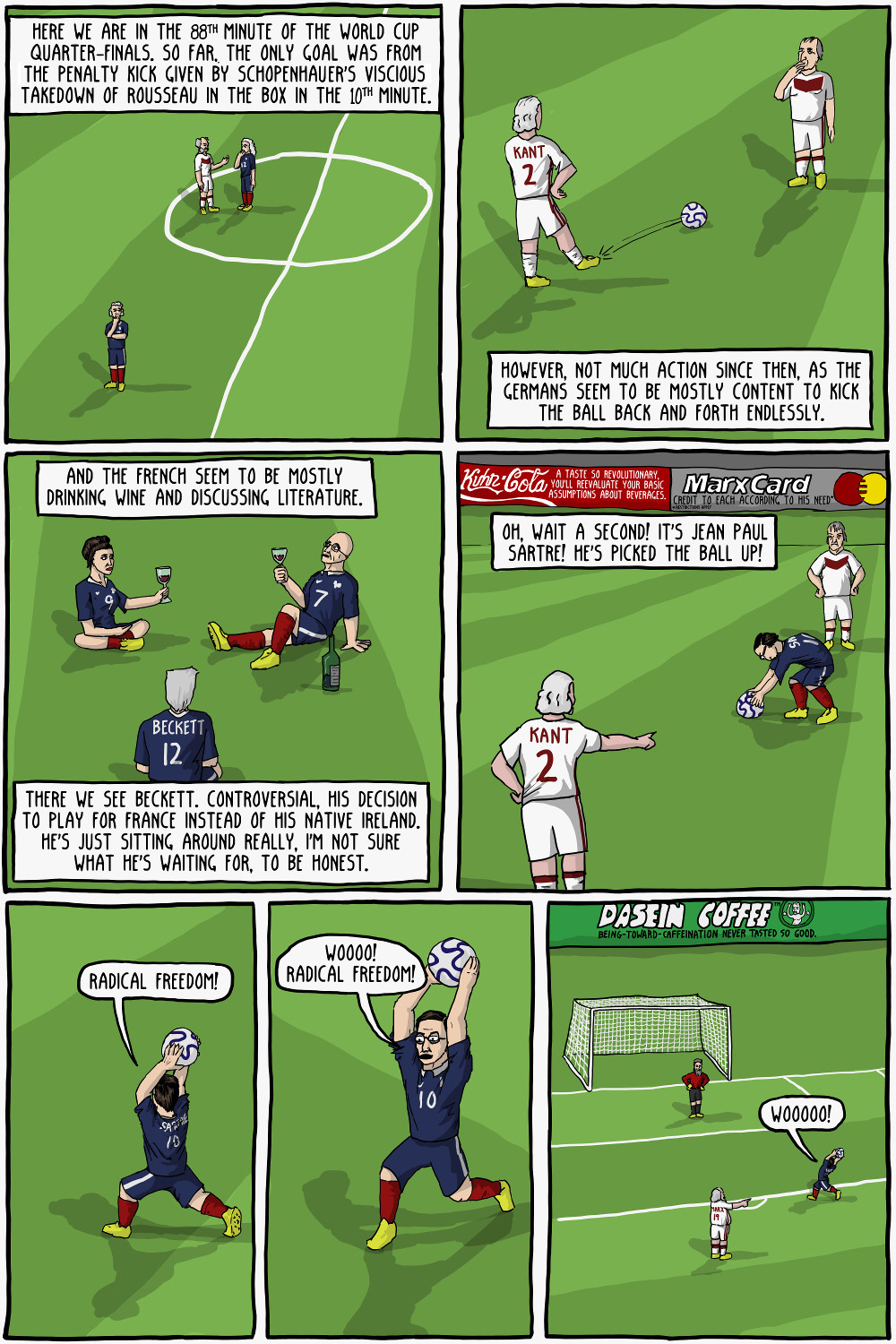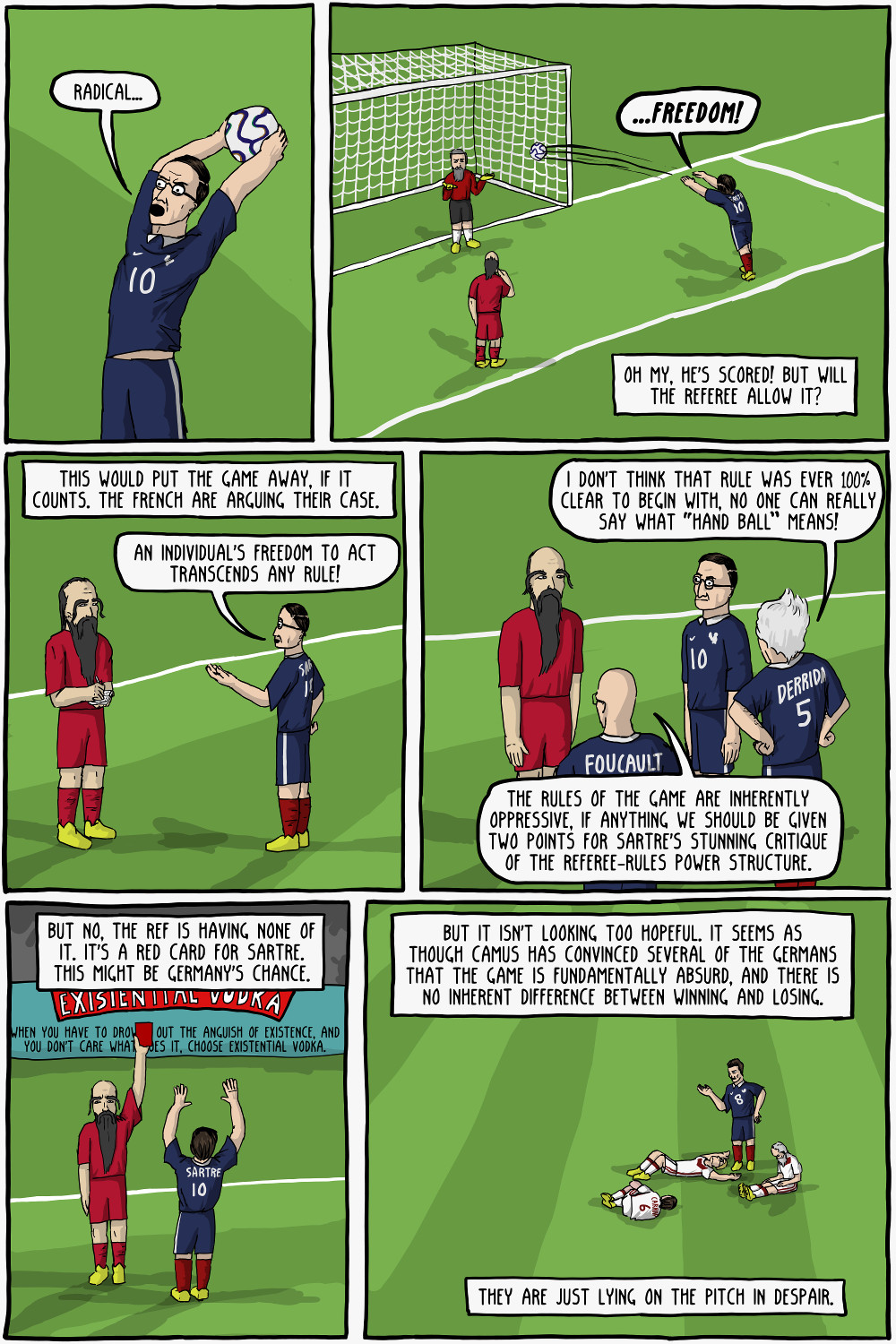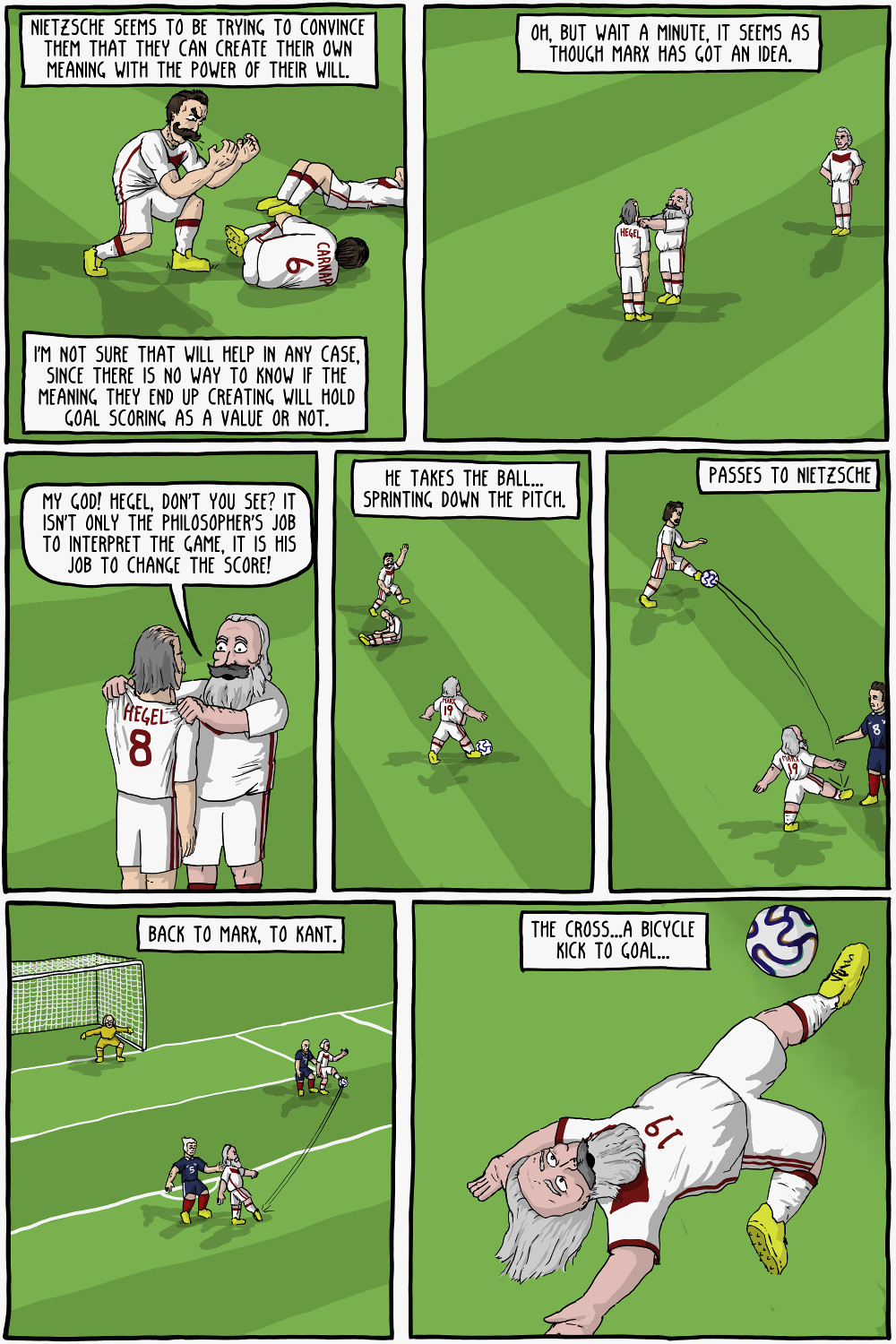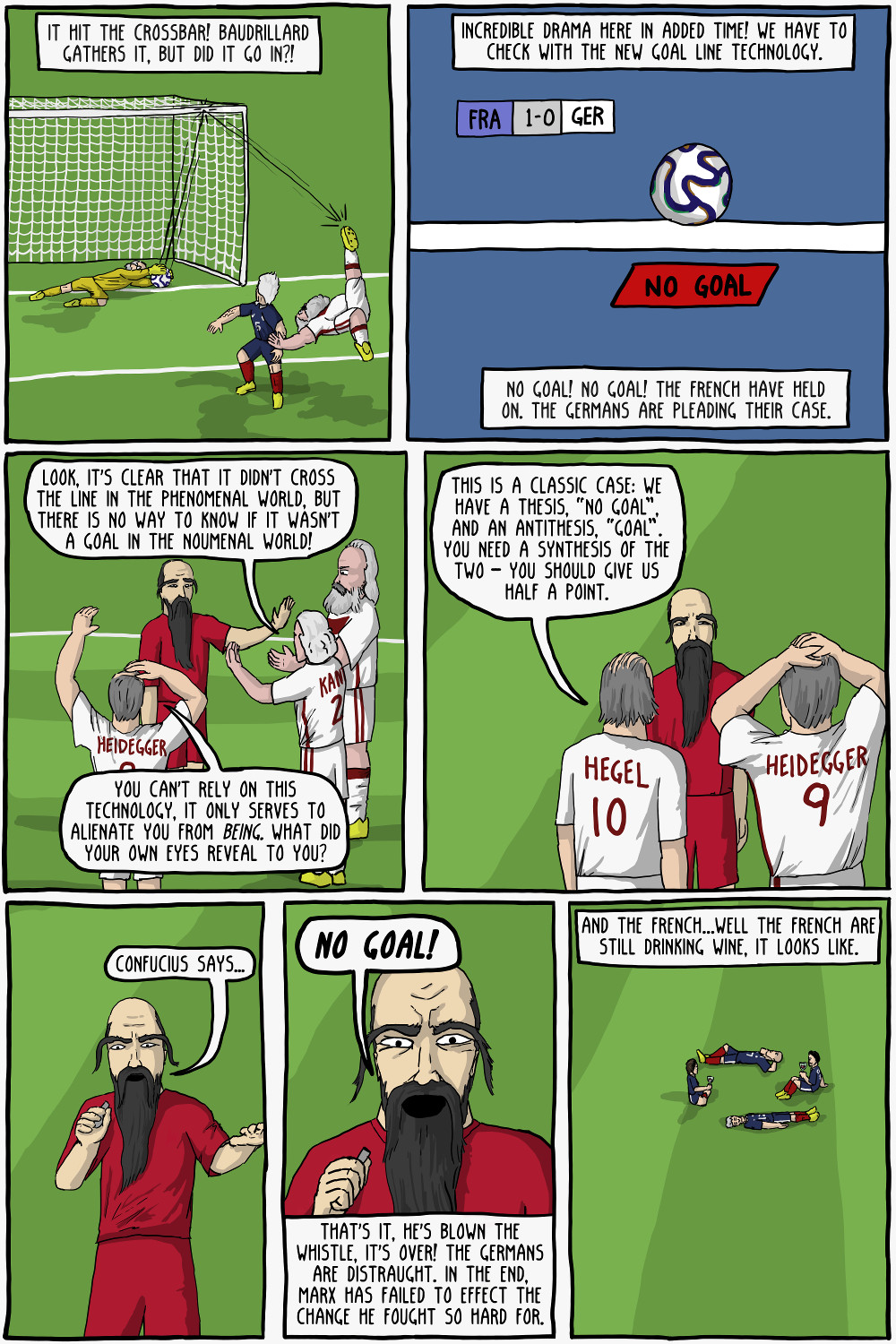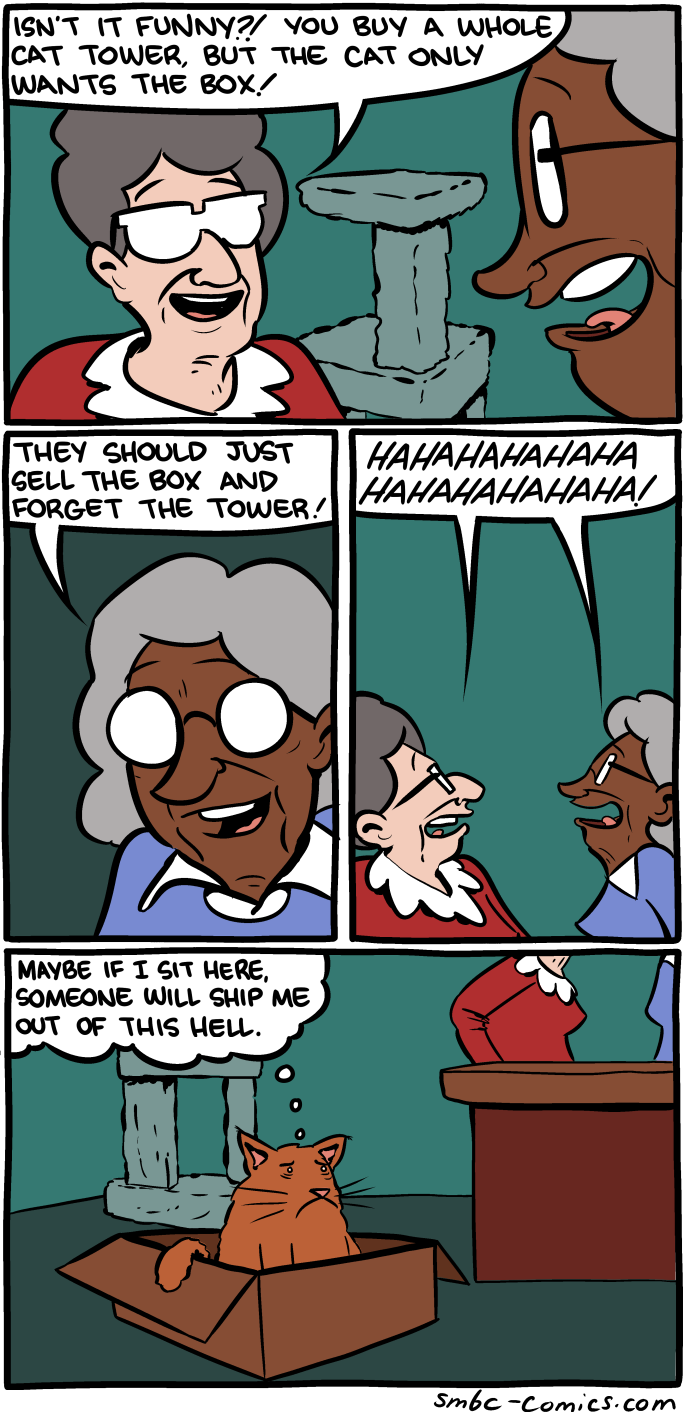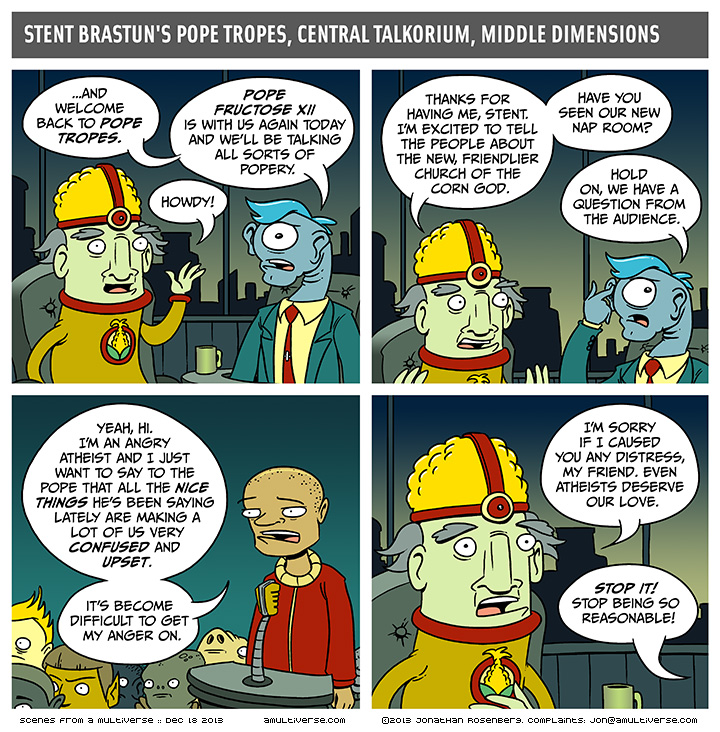Emily Stephen
Shared posts
Dark Science #38 - Read More
Sorry the site’s been down for the last couple of days, there was a database problem and I had to migrate servers. It was a whole thing, but we’re good now!
I hope you all enjoy this one. I planned this page a couple years ago and never actually thought it would ever be so eerily topical. I guess some problems are pretty universal.
#1053; The Star So Softly Said Hello
It’s Now Possible to Eavesdrop on Your Conversation Using a Bag of Chips
If you’ve managed to get over your own NSA-induced, Snowdenian fear of typing, here’s another important privacy question: Do you trust that bag of potato chips you’re holding? The word out of MIT is that you probably shouldn’t. Nearby potted plants should also be treated with suspicion. What makes these everyday items a threat to your (conversational) personal data? It’s just that MIT announced on Monday that its researchers, along Microsoft and Adobe, have developed an algorithm that can reconstruct sound simply by analyzing video of the vibrations of objects around you.
In one set of experiments, [researchers] were able to recover intelligible speech from the vibrations of a potato-chip bag photographed from 15 feet away through soundproof glass. In other experiments, they extracted useful audio signals from videos of aluminum foil, the surface of a glass of water, and even the leaves of a potted plant… “When sound hits an object, it causes the object to vibrate,” says Abe Davis, a graduate student in electrical engineering and computer science at MIT and first author on the new paper. “The motion of this vibration creates a very subtle visual signal that’s usually invisible to the naked eye. People didn’t realize that this information was there.”
Reconstructing audio from video requires that the frequency of the video samples — the number of frames of video captured per second — be higher than the frequency of the audio signal. In some of their experiments, the researchers used a high-speed camera that captured 2,000 to 6,000 frames per second. That’s much faster than the 60 frames per second possible with some smartphones, but well below the frame rates of the best commercial high-speed cameras, which can top 100,000 frames per second.
The researchers plan to present their work at a computer graphics conference, but if you’d like a quick explainer, they have a handy video that breaks down their findings.
Why Classic Rock Isn’t What It Used To Be
Led Zeppelin is classic rock. So are Mötley Crüe and Ozzy Osbourne. But what about U2 or Nirvana? As a child of the 1990s, I never doubted that any of these bands were classic rock, even though it may be shocking for many to hear. And then I heard Green Day’s “American Idiot” on a classic rock station a few weeks ago, and I was shocked.
It was my first time hearing a band I grew up with referred to as “classic rock.” Almost anyone who listens to music over a long enough period of time probably experiences this moment — my colleagues related some of their own, like hearing R.E.M. or Guns N’ Roses on a classic rock station — but it made me wonder, what precisely is classic rock? As it turns out, a massive amount of data collection and analysis, and some algorithms, go into figuring out the answer to that very question.
No one starts a band with the intention of becoming classic rock. It’s just sort of something that happens. Figuring out which genre a band fits into — is it techno or house? — has always been a tricky part of the music business. Identifying what’s classic rock is particularly challenging because it’s a constantly moving target, with very different kinds of music lumped together under the same banner. How the people who choose what music you hear — whether on the radio or an Internet streaming service — go about solving this problem reveals a deep connection between data and music.
To see what the current state of classic rock in the United States looks like, I monitored 25 classic rock radio stations95 operating in 30 of the country’s largest metropolitan areas for a week in June.96 The result, after some substantial data cleaning, was a list of 2,230 unique songs by 475 unique artists, with a total record of 37,665 coded song plays across the stations.
I found that classic rock is more than just music from a certain era, and that it changes depending on where you live. What plays in New York — a disproportionate amount of Billy Joel, for example — won’t necessarily fly in San Antonio, which prefers Mötley Crüe. Classic rock is heavily influenced by region, and in ways that are unexpected. For example, Los Angeles is playing Pearl Jam, a band most popular in the 1990s, five times more frequently than the rest of the country. Boston is playing the ’70s-era Allman Brothers six times more frequently.
To put today’s classic rock on a timeline, I pulled the listed release years for songs in the set from the music database SongFacts.com. While I wasn’t able to get complete coverage, I was able to get an accurate release year for 74 percent of the 2,230 songs and 89 percent of the 37,665 song plays.97 The earliest songs in our set date back to the early 1960s;98 the vast majority of those are Beatles songs, with a few exceptions from The Kinks and one from Booker T. and the MGs. A large number of songs appeared from the mid-’60s through the early ’70s. Classic rock peaked — by song plays — in 1973. In fairness, that was a huge year — with the release of Pink Floyd’s “Dark Side of the Moon”(an album of classic rock staples), Led Zeppelin’s “Houses of the Holy” and Elton John’s “Goodbye Yellow Brick Road”99 — but the trend steadily held for the rest of the ’70s and through the mid-’80s.

The 10-year period from 1973 to 1982 accounts for a whopping 57 percent of all song plays in the set. Besides a small trickle of music from 1995 onward — a trickle to which the Green Day song that inspired this article belongs — the last year to make an actual dent in the listings is 1991. That’s largely due to releases by Nirvana, Metallica and U2, the groups that make up the last wave of what is currently considered classic rock.
But clearly it’s not just when a song was released that makes it classic rock. Popularity matters, as does as a band’s longevity, its sound and a bunch of other factors. To find out why some artists are considered classic rock, I spoke to Eric Wellman, the classic rock brand manager for Clear Channel, which owns nine of the 25 radio stations in our data set. He’s also the programming director at New York’s classic rock station, WAXQ. Wellman said release years have nothing to do with what makes a song “classic rock”; the ability of the genre to grow based on consumers’ tastes is one of the things that’s given it such longevity.
In fact, radio stations are using data to make their selection decisions. Wellman said any radio company with the resources conducts regular studies in its major markets to find out what its listeners consider classic rock. And so it’s you, the consumer, who’s helping to define the genre.
“The standard in the industry these days is an online music test or an auditorium music test where you just gather a sample and have them rate songs based on the hooks — the most familiar parts of the song — and you just get back a whole slew of data,” Wellman said. The stations find a cluster of people who like the music that makes up the core of classic rock, and then finds out what else they like. They like R.E.M.? Well, R.E.M. is now classic rock. “It’s really that simple,” Wellman said.
So here’s what consumers consider classic rock. These were the most-played songs across the 25 radio stations I studied during my week-long observation period:

The top 25 most frequently played artists — the likes of Led Zeppelin, Van Halen and the Rolling Stones — together account for almost half of the spins on classic rock stations in the U.S. Another way of saying that is 5 percent of all the bands played on these stations made up nearly 50 percent of the song plays — which shows that there is at least a classic rock core.
While it’s cool to quantify the most essential classic rock musicians out there, what’s even cooler is comparing each station’s mix to what’s playing in the rest of the country. Doing so demonstrates that the very definition of classic rock can change just by going over to the next city.
This list looks at the 25 most-played artists in our set and then finds the city where they’re played most disproportionately. So if you can never get enough of Led Zeppelin, pack it up and move to New York, where 7 percent of all songs played on WAXQ are by Zep. If you’re like me and can’t stand the Eagles or Tom Petty, stay the heck out of Tampa, where WXGL appears to specialize in them.

Every station has its own character, informed by its audience’s preferences. Classic rock stations do a massive amount of market research to understand who their listeners are and to figure out what songs to play, Wellman said. For example, in the South, listeners like the rock as hard as it comes. According to Wellman, immigration plays a role. “The Hispanic influx across the southern United States vastly changes the rock landscape,” he said. “The common conventional wisdom is that Hispanics who listen to English-language rock like a significantly harder brand of English-language rock. In markets where that is an influence, you’ll see that.”
Migration within the 50 states also plays a role. Billy Joel is bigger in New York than anywhere else in the country, but he’s also the most disproportionately played artist in Miami. Why? Think about who might be listening to classic rock stations in Miami: retired New Yorkers! I looked at each city in our set to find the artist its classic rock station played most disproportionately. Essentially, this map shows the local and regional preferences in classic rock. (Click on the image to see it larger.)
Cities where rock stations have longer legacies, like Detroit and Philadelphia, tend to prefer an older style of classic rock — think J. Geils Band and the Beatles — while cities without that history tend to favor the more contemporary set.
But do radio stations rely at all on the institutional knowledge of their DJs to decide what to play?
Nope. The role of the song-picking DJ is dead. “I know there are some stations and some companies where if you change a song it’s a fireable offense,” Wellman said, cavalierly ruining the magic.100
While all of my data collection and analysis focused on radio stations, which have been around for decades, I decided it was also worth reaching out to digital-native startups and streaming services to see how they’re defining classic rock. The Echo Nest, which is owned by Spotify, uses data to generate song recommendations. A huge part of this work entails placing artists into genres. At its very core, the methodology used by The Echo Nest isn’t all that different from what Clear Channel does: Pick a center of the universe — if we’re talking classic rock, that would be Zeppelin, Floyd, etc. — and then find out what orbits the center. Radio stations figure this out based on interviews and music tests. Glenn McDonald, who’s in charge of developing the genre algorithm at The Echo Nest, goes about it using math.
“We start from a set of artists and use a lot of complicated math to extrapolate the rest of the universe if those artists are the the center of it,” McDonald said. In order to define a genre, first McDonald has to find out the relationships among different artists. To do that, he relies on a mountain of data that The Echo Nest collects from users and elsewhere. “We have listening histories and machines that go read the web,” he said. “We read charts, we read reviews, we read blog posts, we read news articles, Wikipedia entries, pretty much anything we’re legally allowed to read.”
These inputs are then interpreted into a relational map among artists showing how similar each is to another — essentially a map of the musical universe. For example, if each artist was a point in space, McDonald would know how close that point is to every other point. And “genre” is what happens when McDonald sees a cluster of points form.
In addition to the web-crawlers and listening histories, The Echo Nest uses sophisticated music-analysis software to figure out the qualities of different songs. McDonald looks at 13 dimensions when evaluating genre: tempo, energy, loudness, danceability, whether a song is more acoustic or electric, dense or spare, atmospheric or bouncy, and so on. Some genres are defined by one of these dimensions in particular — electronic music with a very finite range of beats per minute, say — and some are painted in broader strokes, like classic rock.
Classic rock, McDonald said, has a much wider range of tempo and rarely is powered by a drum machine. The Echo Nest can detect whether an actual person is behind a drum set based on minor imperfections in tempo, or beats that a drum machine can’t mimic. “The timing will be very human and unmechanical,” a dead giveaway, he said.
But McDonald agrees with Clear Channel’s Wellman: The classic rock genre is always changing, and that’s one of the things that makes it so hard to define.
So what’s next for Classic Rock? Should I steel myself for One Direction’s eventual air time on the WAXQ of tomorrow?
It’s going to come down to economics, Wellman said. As baby boomers and Gen X-ers age out of the key advertising demographic over the next five to 10 years, one of two things will happen. Either advertisers will chase them, or classic rock will start to skew younger.
CORRECTION (July 8, 9:35 a.m.): A footnote in an earlier version of this story listed the incorrect call numbers for the classic rock station we monitored in Houston. It was KGLK, not KKRW.
Listen to the most-played classic rock hits and other songs on FiveThirtyEight’s Classic Rock Playlist on Spotify:
As if we needed another example of lying with statistics and not issuing a correction: bike-share injuries
This post is by Phil Price
A Washington Post article says “In the first study of its kind, researchers from Washington State University and elsewhere found a 14 percent greater risk of head injuries to cyclists associated with cities that have bike share programs. In fact, when they compared raw head injury data for cyclists in five cities before and after they added bike share programs, the researchers found a 7.8 percent increase in the number of head injuries to cyclists.”
Actually that’s not even an example of “how to lie with statistics”, it’s simply an example of “how to lie”: As noted on StreetsBlog, data published in the study show that “In the cities that implemented bike-share…all injuries declined 28 percent, from 757 to 545. Head injuries declined 14 percent, from 319 to 273 per year. And moderate to severe head injuries also declined from 162 to 119. Meanwhile, in the control cities that do not have bike-share, all injuries increased slightly from 932 to 953 per year — 6 percent.” There’s a nice table on Streetsblog, taken from the study(make sure you read the caption).
So the number of head injuries declined by 14 percent, and the Washington Post reporter — Lenny Bernstein, for those of you keeping score at home — says they went up 7.8%. That’s a pretty big mistake! How did it happen? Well, the number of head injuries went down, but the number of injuries that were not head injuries went down even more, so the proportion of head injuries that were head injuries went up.
According to StreetsBlog, University of British Columbia public health professor Kay Ann Teschke “attempted to notify Bernstein of the problem with the article in the comments of the story, and he was initially dismissive. He has since admitted in the comments that she is right, but had not adjusted his piece substantially at the time we published this post.” (I don’t see that exchange in the comments, although I do see that other commenters have pointed out the error).
To be fair to Bernstein, it looks like he may have gotten his bad information straight from the researchers who did the study: The University of Washington’s Health Sciences NewsBeat also says “Risk of head injury among cyclists increased 14 percent after implementation of bike-share programs in several major cities”. It’s hard to fault Bernstein for getting the story wrong if he was just repeating errors that were in a press release approved by one of the study’s authors!
But how do Bernstein, the Washington Post, the study’s author at University of Washington (Janessa Graves), and the University of Washington justify their failure to correct this misinformation? It’s a major error, and it’s not that hard to edit a web page to insert a correction or retraction.
[Note added June 18: When I posted this I also emailed Bernstein and the UW Health Sciences Newsbeat to give them a heads-up and invite comment. Newsbeat has changed the story to make it clear that the proportion of injuries that are head injuries increased in the bike share cities. They do not note that the number of head injuries decreased, and it looks like they forgot to correct the headline so it's still wrong. At least they acknowledged the problem and did something, although I daresay most readers of that page will still be misled. But it's no longer flat wrong. Except the headline.]
Of course, even simply retracting the story is a missed opportunity: the real story here is that injuries went down in bike share cities in spite of the fact that there were more people riding. That’s a surprise! As a bike commuter, I know that it has long been argued that biking becomes safer per biker-mile as more people ride, because drivers become more alert to the likely presence of bikes. But I would not have expected that the decrease in risk per mile would more than counteract the number of miles ridden, such that the number of injuries would go down. Or, of course, maybe that’s not what happened, maybe there were other changes that were coincident with the introduction of bike share programs, that decreased risk in the bike share cities but not the control cities.
This sort of thing — by which I mean mis-reporting of scientific results in general — is just so, so frustrating and demoralizing to me. If people think bike share programs substantially increase the risk of injury, that belief has consequences. It affects the amount of public support for such programs (and for biking in general) as well as affecting individuals’ decisions about whether or not to use those programs themselves. To see these stories get twisted around, and to see journalists refuse to correct them…grrrrr.
This post is by Phil Price
[Andrew, please add "Ethics" and "Journalism" categories to this blog]
The post As if we needed another example of lying with statistics and not issuing a correction: bike-share injuries appeared first on Statistical Modeling, Causal Inference, and Social Science.
May 23, 2014
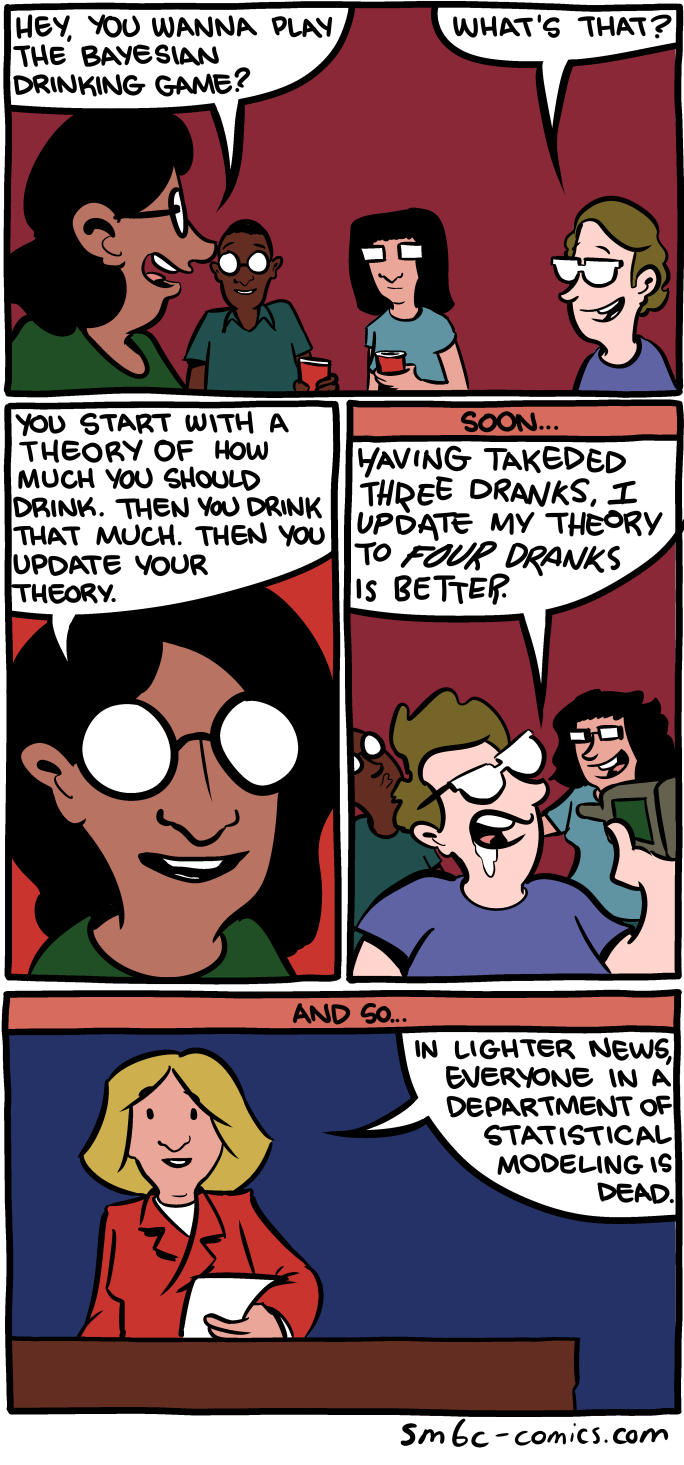
New awesome thing, launching very shortly!
Vicious Circle - Piano By Yasser Farouk & The Best Hoola Hoop Player
The Good Pope
Popes! They’re always surprising you. I bet this pope loves to party.
On Tuesday, we reached the first goal in our Patreon drive! Thank you to all of you who chipped in and helped make this such a success. I’m going to do my best to make your patronage worthwhile and enjoyable. I get to keep drawing comics and it’s all thanks to you.
We’ll start sending out your rewards when the first pledges get processed at the end of the month.
The Patreon page will remain up and open to new patrons. If you’re ready to take the dive and pledge a dollar or so per month, we’ll be there waiting for you.
The Anatomy of The Postmodern Prank
I’m not sure what the first prank was, but, I’d bet, since it was the first ever prank without anything to base it off of, it probably involved someone dying. Either someone got infuriated at the prank being pulled on him or her and became overly vengeful, or the prank involved unexpected tripping and falling a distance not suitable for human survival.
From that moment in history, as theoretical as it may be, to now, pranks have become much more complex, layered, and, most importantly, less hurtful/victimizing. The late Andy Kaufman still serves as an example of trailblazing of pranking with his Mighty Mouse bit or his song “I Trusted You” or his infamous reading of The Great Gatsby where the humor is derived from watching Andy confound an audience that was expecting a more traditional comedy act.
Saying he was ahead of his time is almost rote now, but, thankfully, comedy at large appears to have caught up in a way where Kaufman can be appreciated by a whole new generation (there’s even a whole comedy competition dedicated to him in the spirit of his comedy).

Jackass, Bam Margera, Punk’d and many other MTV shows/personalities for a while seemed to be what people’s first thought would be at the mention of “prank.” Such notoriety was gained from basically exhibiting people in cases of absurd pain and extreme awkwardness without very much cleverness or consideration for the victim. There are plenty of celebrities that grinned through their being pissed off while having to stand next to Ashton Kutcher and admit that they just got Punk’d.
There are a whole class of pranksters in 2013 that aren’t just having someone walking into a beehive, or making it seem like someone is moving all their stuff out of their house right as they come home, or any number of things that happened on those aforementioned shows. There are a handful of comedians that prank to bring joy, as comedian/prankster extraordinaire Kurt Braunohler says, “…by inserting stupidity and absurdity into strangers’ lives.” As such, one can consider what they do as almost a deconstruction of the prank, subverting the idea of it just being defined as a mischievous act. It would be high concept performance art, except for the fact that it’s pretty damn funny.
Improv Everywhere is in many ways like Fight Club‘s Project Mayhem, if Project Mayhem didn’t destroy any property, fight anyone, tamper with anyone’s food, etc. Since 2001, Improv Everywhere founder and ringleader Charlie Todd has set up ridiculous public displays such as having a bunch of “agents” of Improv Everywhere dress in blue polos and khakis while walking around a Best Buy or the annual “No Pants Subway Ride”, in which people and agents alike ride the subway with no pants. All of these pranks are large scale, largely harmless and innocuous to strangers and passers by, and has sent Improv Everywhere into viral status on the Internet. The most uncomfortable thing that they’ve done to date, though still very funny, was probably to set up a booth in Aspen, CO to meet a black guy (as there are so few black people in the general population in Aspen).
Kurt Braunohler, considering how great his exploits are in his wonderful large scale pranks, should be commissioned by art museums/festivals. Much like painters and their periods, Braunohler has done everything from buying greeting cards and then changing the message inside, then putting them back on the display where he bought them, all the way to getting a Kickstarter to fund a plane to write in the sky, “How Do I Land?” (as pictured at the top of this article). All of these “prank installations” are fixed and involve people just running into something incredibly, but beautifully, ludicrous. In my experience, specifically, being witness to the skywriting joke as well as a prank stop sign Kurt had made that says, “No, YOU Stop,” there’s no feeling of being hoodwinked or a sense of “gotcha” from either party involved.
The Walsh Brothers, a brotherly comedy duo responsible for bringing planking to the U.S. as well as starring in their own “anti-prank” web series The Great and Secret Comedy Show at CC:Studios, try to create absurd moments much like Braunohler, in a more live and present way. For instance, they have gotten a ghillie suit used by snipers to hide in foliage, tried to “hide” while clearly visible against a wall or something, and then fail at scaring people. This is probably one of the better examples throughout here of the deconstruction of the concept of a prank that still ends up being hilarious, but which also doesn’t go over anyone’s head.
Nathan Fielder utilized the platform of his Comedy Central series Nathan For You to prank as much of America as he could (maybe that has to do with him being Canadian?). While convincing businesses how they could improve their services with very unconventional ideas (i.e., poop flavored frozen yogurt), Fielder, in my opinion, probably pulled off some of his best and biggest pranks online. He convinced fans, or really anyone willing, to text something mysterious to a loved one along the lines of ending a relationship or that they were going to buy drugs, then wait a few hours to respond/explain that this was a prank, then left a number to call to assure everyone that this was a prank, which turned out to be just a voicemail claiming that none of this was a prank. While some probably experienced the discomfort of being in the prank, they did unwittingly go for Fielder’s bait on the first level of the prank, providing a pretty good laugh to the whole of the Internet. “Prank inception,” perhaps?

The last set of pranksters to be highlighted here will be Brendon Walsh and Randy Liedtke. There are plenty more to discuss, but what’s featured here is a pretty good cross section of to what high level comedians have taken their public tomfoolery. Together, they host the Bone Zone podcast along with another hilarious prankster comedian, Davey Johnson, and all love pulling conceptually traditional pranks, having done so for much of their comedy careers, but with a much more innovative touch. Some of you might have seen Liedtke’s name come up recently for the elaborate Twitter hoax he pulled on fellow comedian Kyle Kinane by creating a fake Pace Foods Twitter account to take Kinane down a rabbit hole of a supposedly automated corporate Twitter account. Brendon has been known to post a fake sign on the fence of an open lot promising that the trendy grocery store chain Whole Foods was finally coming to the trendy neighborhood of Silverlake in Los Angeles and see people, in so many words, “lose their shit.” This might seem in the spirit of something that you might have seen on Punk’d, but it’s so much more sophisticated then having an actor play a parking enforcement officer, which is why, for the most part, people appreciate the artistry of Walsh and Liedtke’s hijinks, even the people being had in the prank.
So, in short, many of these pranks have evolved into, as suggested previously, something beautiful in all their incongruity. It’s an exciting time for the prank, and we can all only wait to be amazed by what someone will pull off next just using Photoshop, social media, and a really balanced sense of humor.
Please mention some of your favorite pranks/pranksters that push this comedy niche forward in the comments below.





